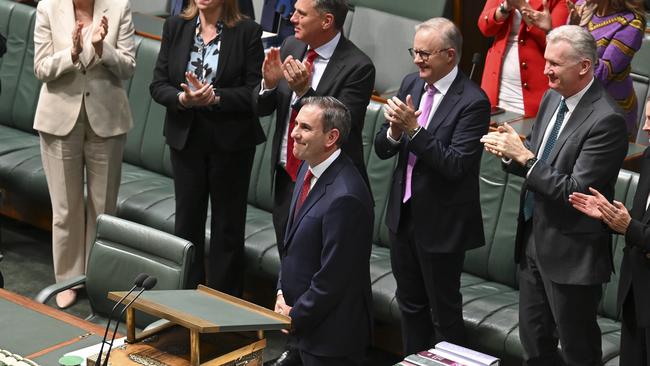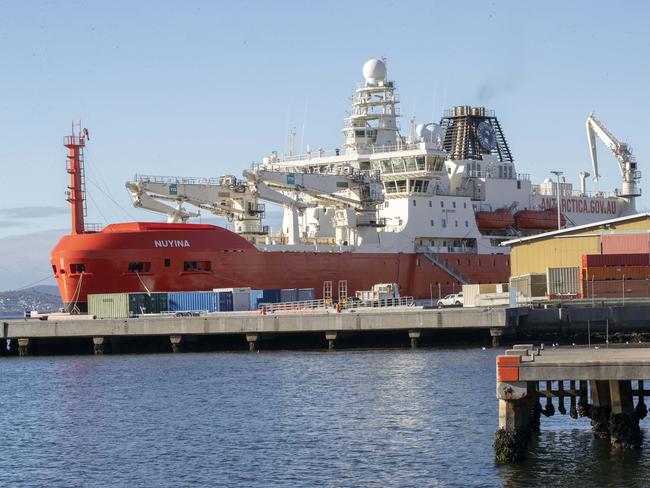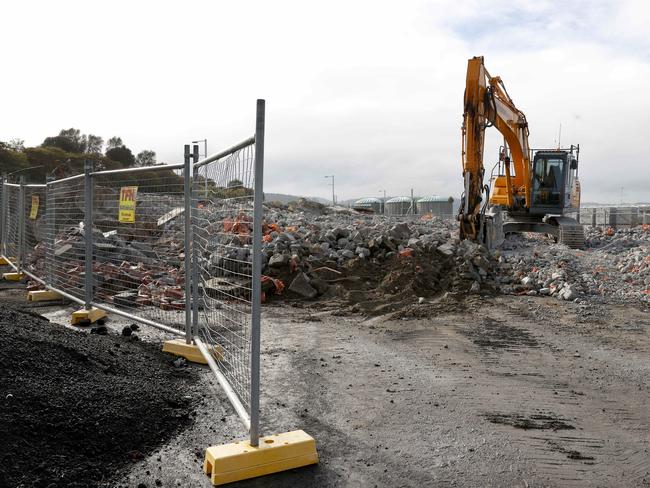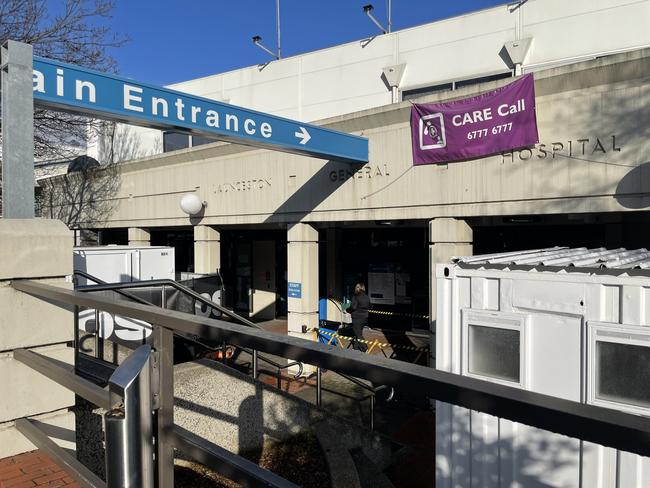Here’s what the federal budget means for Tasmania
The federal budget has dropped and we’ve crunched the numbers. Want to know what’s in it for everyday Tasmanians? Read our budget breakdown.
Tasmania
Don't miss out on the headlines from Tasmania. Followed categories will be added to My News.
Tuesday night’s budget delivered a few surprises for Tasmanians, including a major upgrade of the Lyell Highway, and $37m less for the Macquarie Point stadium this financial year than what was originally promised.
Treasurer Jim Chalmers pitched his third budget under the tagline “cost of living help and a future made in Australia”, highlighting the Albanese Government’s priorities of strengthening Medicare, investing in manufacturing, building more homes, and delivering tax cuts to all 13.6m Australian taxpayers.

Mr Chalmers said that while Treasury forecasts indicated Australia’s rate of inflation could return to target as early as the end of the year, the budget was being delivered amid an uncertain international environment.
“It’s framed in fraught and fragile global conditions,” the Treasurer said.
“The world economy is resilient in parts but subdued overall.
“Inflation is lingering in North America, growth is slowing in China and tepid in Europe, tensions have escalated in the Middle East and persist in Ukraine, global supply chains are fragmenting.”
Tasmania received $3.419bn in 2023-24 and Tuesday’s federal budget revealed its share of the consumption tax is estimated to be $3.519bn in 2024-25.
Tasmania’s slice of GST
Tasmanian government revenues will take a slight hit in 2024/25, with Australia’s smallest state to receive GST payments of $3.519bn in the next financial year, after Mr Chalmers handed down the 2024/25 budget.
The figure - a $100m increase compared to the amount of the national consumption tax Tasmania received last year - represents the government’s single biggest source of revenue, and will have to be factored into the state budget that Treasurer Michael Ferguson hands down later this year.
Last year’s state budget forecast a GST revenue for Tasmania of $3.541bn, meaning the state has been left more than $20m short of original estimates.
What about the stadium?
Federal funding for the proposed Macquarie Point stadium will be heavily back-loaded and Canberra will chip in $37m less this financial year than originally promised.
According to the 2024-25 federal budget papers, Tasmania will receive $8m next financial year for Hobart and Launceston urban renewal co-investments, including the Macquarie Point precinct transformation and the redevelopment of the University of Tasmania Stadium in the Northern city.
That’s despite the fact that the federal government committed last year to provide $45m in total funding for the projects in 2024-25.
Overall, the Albanese government will invest a total of $305m between 2023-24 and 2027-28. Of that investment, $240m will go to the Macquarie Point precinct and $65m will go to the Launceston stadium.

The bulk of federal funding support will arrive in 2025-26 and 2026-27, when Tasmania will receive $95.6m and $136.4m, respectively.
In 2027-28, when the Tasmania Devils – who will eventually call the proposed waterfront stadium home – is due to officially enter the national competition, Canberra will provide $60m for the Hobart and Launceston projects.
Tasmania received just $5m for the stadium works in 2023-24 instead of the $20m pledged in last year’s budget.
The Rockliff government has capped the state’s contribution to the stadium at $375m, while the AFL has committed $15m. The project is expected to cost at least $715m.
It is not expected to be built until at least 2029.
The Devils are set to play at Blundstone Arena at Bellerive and UTAS Stadium upon their entry into the league.
Following Labor’s defeat at the state election in March, newly appointed Opposition Leader Dean Winter announced last week the party would now be supporting a stadium at Macquarie Point.
But Mr Winter has urged the Tasmanian Liberal government not to rule out the alternative stadium proposal for the precinct – dubbed Stadium 2.0 – which is being spearheaded by a private consortium led by developer Dean Coleman and former Labor premier Paul Lennon.

Labor’s about-face on the project has all but ensured it will clear the crucial hurdle of being declared a Project of State Significance, which would require the approval of both houses of parliament.
This would require the Tasmanian Planning Commission to undertake an integrated assessment of the proposal.
Here are the Tasmanian highlights of the federal budget
■ Under the latest national fiscal blueprint, a key stretch of the Lyell Hwy between Granton and New Norfolk will be upgraded after the Albanese government confirmed it would invest $80m into the project.
■ Federal Treasurer Jim Chalmers threw beleaguered icebreaker RSV Nuyina a $17.6m lifeline to undertake additional marine science voyages, while Freycinet National Park will receive $5.9m for upgraded tourist facilities.

The funding for the RSV Nuyina forms part of a $67m budget commitment for Antarctic shipping and supporting science and Australian leadership in Antarctica.
It comes after a Senate inquiry into Australian Antarctic Division funding recommended a drastic overhaul of the agency, with calls for a second vessel to be acquired to support Australia’s presence on the frozen continent.
■ Tasmania also received a 400 per cent increase on last year’s power bill relief funding, with the state’s $88m allocation part of the Federal Government’s $3.5bn package for households and small business.
■ A total of $2.2bn will go towards getting Tasmanian infrastructure projects off the ground over the next decade, including a long-promised, $50m revamp of the Mornington Roundabout project.
■ Tasmania will receive $8m next financial year for Hobart and Launceston urban renewal co-investments, including the Macquarie Point and the redevelopment of the University of Tasmania Stadium, despite the federal government last year committing $45m in total funding for the projects in 2024-25.

Overall, the Albanese government will invest a total of $305m between 2023-24 and 2027-28. Of that investment, $240m will go to the Macquarie Point precinct and $65m will go to the Launceston stadium.
■ Tasmania will receive $3.3m this coming financial year for the Black Spots road safety program
■ $21.4m will flow to Tasmania in 2024-25 for projects improving the efficiency and safety of the rail network.
■ Tasmania’s learners will benefit from a $680m budgetary allocation to education, made through the Quality Schools funding scheme.
Government schools were assigned $254.2m of the total, with the remaining $422.5m destined for non-government schools.
■ The state also received another $56.6m under the National Skills Agreement for workforce development, with a further $1.2m to support fee-free TAFE.
■ Tasmania’s health system will receive a $660m federal injection next financial year, with funding provided under the National Health Reform Agreement delivering $30m more into the state’s public hospitals than was received in last year’s federal budget.
■ Tuesday’s budget also included $5m for the construction of a new palliative care hospice located within the Launceston General Hospital Precinct, and a further $400,000 to develop a medical research centre at the hospital.

■ Tasmania was allocated $37.4m in the budget to assist with the effective operation of the state’s social housing services, as part of the Federal Government’s doubling of the funding component for homelessness.
■ Meanwhile, Tasmania’s ambitions to become a key player in green hydrogen production received a boost, with the federal Treasurer announcing the Government would invest $8 billion over 10 years to support the production of renewable hydrogen, with $1.3bn allocated over the coming four years for an additional round of the Hydrogen Headstart program.




